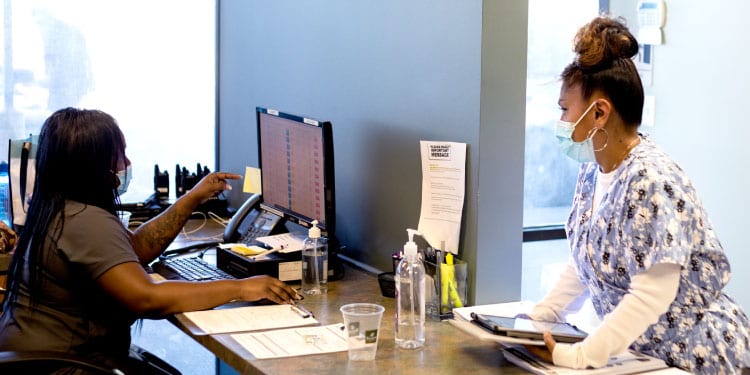
How to Assess Urgent Care Workflow for Bottlenecks
August 10, 2018

Urgent care workflow bottlenecks are like germs, viruses, and bacteria. These hidden threats wait around every turn to pounce on unsuspecting patients, who end up weak, tired, unproductive, and in your waiting room. You wipe out the germs and get your patients feeling great and back on track.
In the same way, urgent care clinics are susceptible to germs and viruses of their own that can result in underperformance, wasted time, and increased cost of doing business. But while it’s easy to diagnose and treat patients, determining the bottlenecks in your urgent care and finding the right prescription to fix them is not nearly as simple.
A bottleneck occurs when one process in a chain of processes is performing at limited capacity, reducing the capacity of the whole chain. In urgent care, a bottleneck not only lowers efficiency, it can slow (or stall) your revenue cycle, lower patient satisfaction, decrease morale, and increase pressure from patients who expect a quick and painless urgent care experience.
Most urgent care bottlenecks can be found buried in your processes. The only way to find them is to dive deep into the actions you take at each part of your process—starting at your front desk, in triage, and during the patient exam.
Don’t go it alone. Use our three-part Bottleneck Assessment to find those pesky process problems so you can cure them once and for all.
For each section of this bottleneck assessment, determine your performance in each area based on current data or observation, not your best guess. If you don’t have quick access to data and reports, you may have found your first bottleneck.
So many tasks must be completed properly and efficiently at the front desk to ensure a smooth workflow through every encounter. This part of the process provides plenty of opportunities for bottlenecks to show up.
Use the following list of questions to identify bottlenecks at your front desk.
Effective triage positively affects patient experience and providers satisfaction, shortens the length of each encounter, and reduces overall door-to-door time. It streamlines urgent care workflow bottlenecks. At its core, triage is rapid evaluation by an experienced clinician to determine complexity and priority—and determine what happens next. Triage bottlenecks can be an indication of staff inefficiency but are more commonly caused by process, system, and software issues.
Use the following questions to identify bottlenecks in triage.
Doctors often view interacting with an EMR as a less-than-valuable use of their time that interferes with patient care. In short, they would rather be treating patients. It can be a difficult trade off—dividing their attention between their patient and the technology, or deferring data entry until after the patient leaves, increasing the hours in their actual workday. Cumbersome interfaces intensify their discomfort. For these and other reasons, it’s not surprising to find urgent care workflow bottlenecks at this stage of the process.
Use the following questions to identify bottlenecks during the exam.
Efficiency is everything in urgent care. To be successful, remove the urgent care workflow bottlenecks in your processes. After you’ve assessed every step in your workflow and processes, you may determine that your urgent care is running smoothly and efficiently.
But if bottlenecks are obvious, it’s time to make some changes including the following:
When all the changes to your current staff and processes aren’t enough, it’s time to switch to a software and services provider—like Experity—to help you find urgent care workflow bottlenecks and get on track for success.
Take this Urgent Care Bottleneck Assessment to go and see if your EMR is the right solution or a bottleneck in your processes.
Join over 20,000 healthcare professionals who receive our monthly newsletter.